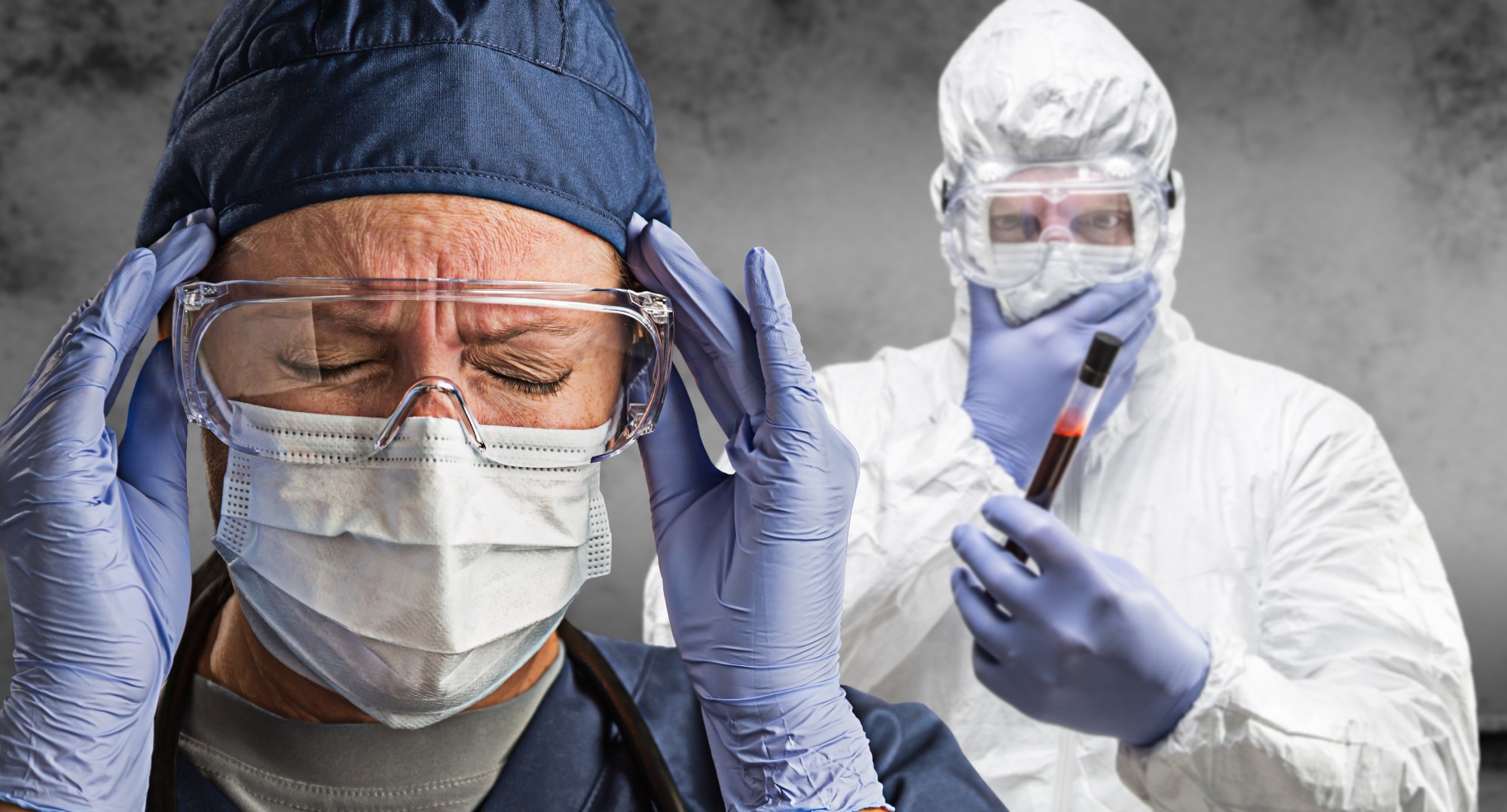In a recent comment published in the Annals of Internal Medicine, researchers examined the usefulness of universal masking among healthcare professionals (HCP) during the coronavirus disease 2019 (COVID-19) pandemic to make arguments about whether or not it should become an essential standard precautions, transmission-based precautions (specific to the pathogen), and beyond in health care settings in the future. Additionally, they addressed future situations that could trigger a re-examination of mandatory mask-wearing for healthcare professionals.
Ideas and opinions: Universal masking in health care settings: a pandemic strategy whose time has come and gone, for now. Image Credit: Andy Dean Photography / Shutterstock
Current Masking Policies in Healthcare Facilities
Although the World Health Organization (WHO) has announced that the public health emergency caused by COVID-19 is coming to an end, the widespread use of face coverings continues in healthcare settings.
Universal masking was an essential infection prevention and control (IPC) measure when the pandemic began due to the lack of pharmaceutical options, including drug treatments and vaccines. Also, at that time, testing capacity for severe acute respiratory syndrome coronavirus 2 (SARS-CoV-2) was limited and the world’s population had not achieved immunity. Thus, non-pharmaceutical interventions (NPIs) were the only measures to mitigate the transmission of SARS-CoV-2.
As part of standard precautions, healthcare professionals use face masks and eye protection to protect against exposure during activities that may generate splashes or sprays on the face, regardless of patient symptoms . When caring for patients with a suspected or confirmed respiratory infection, healthcare professionals take transmission-based precautions, for example, they use personal protective equipment (PPE). During the pandemic, mandatory and extensive face mask wearing for healthcare professionals, patients and visitors in healthcare facilities effectively minimized the risk of pathogen transmission. It also reduced the risk of morbidity and mortality from SARS-CoV-2.
There are both pros and cons to maintaining policies, such as universal masking. Of all its benefits, the most important is that masks could protect healthcare professionals engaged in direct patient care, regardless of symptoms or diagnosis, and slightly reduce the risk of transmission from healthcare professional to patient and vice versa. poured. However, now that SARS-CoV-2 has become stable, it appears necessary to carefully weigh its potential additional benefits against its costs.
In addition to its higher cost, masking hinders communication between healthcare professionals and their patients. These effects are more pronounced in patients whose first language is not English or those who have a hearing problem, thus relying more on non-verbal cues. Such clinical encounters also increase the cognitive load of patients and healthcare professionals. Additionally, masks obscure facial expressions and interfere with human connection and feelings of trust and empathy. Now, the debate over the incorporation of face masks for healthcare professionals continues.
The future of masking in healthcare facilities
Masking policies remain a key CIP strategy. A transition from universal masking policies, like other pandemic strategies, for example, asymptomatic testing and contact tracing, would require reconsidering their risk-benefit balance. However, it will be essential to educate healthcare professionals, patients and others about the value of masking in healthcare settings and the rationale for its continued use amid the evolving pandemic and the transition of SARS-CoV-2 to endemicity.
In a future pandemic or regional outbreak, targeted masking policies and their widespread use could become part of a cluster response. However, studies quantifying the incremental value of various intervention measures under different epidemiological circumstances would help in making top-down decisions about them.
Providing health systems with high-quality epidemiological data based on regular reassessment of regional situations will help ensure that decisions around masking can be reinforced when needed.
In fact, an advisory committee working under the aegis of the Centers for Disease Control (CDC) is currently re-evaluating prevailing transmission-based methodologies to inform future mitigation strategies in healthcare settings. Further studies assessing the risks of transmission from healthcare workers or infected patients due to different types of respiratory viruses based on intensity of exposure and stages of infection could also inform future policies. Nonetheless, the researchers advocated the dynamic deployment of masking as an IPC strategy that healthcare professionals adapt to as the situation constantly changes.
Journal reference:
- Universal masking in health care settings: A pandemic strategy whose time has come and gone, for now, Erica S. Shenoy, Hilary M. Babcock, Karen B. Brust, Michael S. Calderwood, Shira Doron, Anurag N. Malani, Sharon B Wright, Westyn Branch-Elliman, Annals of Internal Medicine 2023, DOI: https://doi.org/10.7326/M23-0793, https://www.acpjournals.org/doi/10.7326/M23 -0793

